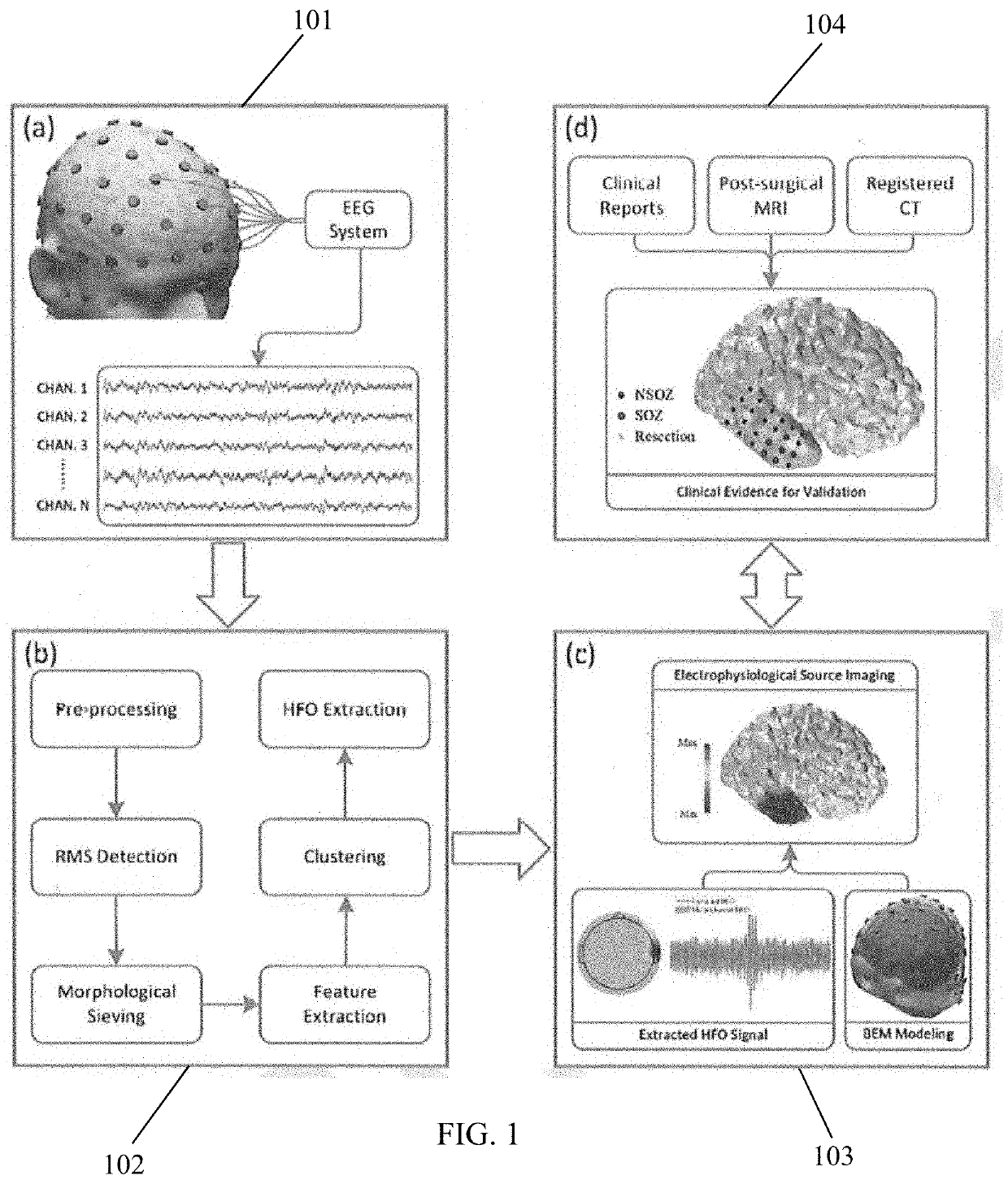Methods and Apparatus for Detection and Imaging of Epileptogenicity from Scalp High-Frequency Oscillations
a high-frequency oscillation and epileptogenicity technology, applied in the field of methods and apparatus for detection and imaging of epileptogenicity from scalp high-frequency oscillations, can solve the problems of limited regional coverage, difficult to achieve, and difficult to achieve, and achieve the effect of facilitating clinical management of epilepsy
- Summary
- Abstract
- Description
- Claims
- Application Information
AI Technical Summary
Benefits of technology
Problems solved by technology
Method used
Image
Examples
Embodiment Construction
[0018]In epilepsy, high-frequency oscillations (HFOs) are observed and defined as events that stand out of the background with an approximately sinusoidal shape and a duration of at least four cycles. Studies have also observed nearly half of the ripples cooccurring with spikes (a typical form of inter-ictal epileptiform discharges, IEDs), termed “spike-ripples” (sRipples). These events are easier to detect than HFOs appearing alone and might be more related to pathological epileptic activities. Therefore, the method of the present invention, named Spike Ripple Source Imaging Algorithm (SPIRAL), can be used to detect, discriminate, and image the sRipples in scalp EEG for the purpose of delineating the epileptogenicity in epilepsy patients. A diagram of SPIRAL method is illustrated in FIG. 1.
[0019]The method consists of two major modules, namely, an identification module and an ESI module, which perform certain steps of the method. First, at step 101, scalp EEG data is recorded using...
PUM
 Login to View More
Login to View More Abstract
Description
Claims
Application Information
 Login to View More
Login to View More - R&D
- Intellectual Property
- Life Sciences
- Materials
- Tech Scout
- Unparalleled Data Quality
- Higher Quality Content
- 60% Fewer Hallucinations
Browse by: Latest US Patents, China's latest patents, Technical Efficacy Thesaurus, Application Domain, Technology Topic, Popular Technical Reports.
© 2025 PatSnap. All rights reserved.Legal|Privacy policy|Modern Slavery Act Transparency Statement|Sitemap|About US| Contact US: help@patsnap.com



